- skip to content
- Recent Changes
- Media Manager
- NEWS AND CURRENT EVENTS
- SWA Member Simulations
- Harassment and Discrimination Policy
- SWA Privacy Policy
- Split World Alliance Charter

SWA Products
- Project Nebula (SWA's Fork of Nova)
- Hera Reader
- Member Simulations
- Simming Guide
- Split World Alliance Information
- Starship Classes
- Alien Races
- Starship Navigation
- Banned Players List
- Something Different
- Obsidian Fleet
- Pegasus Fleet
- Theta Fleet
Join us in Discord
We have Merchandise!
Navigation Coordinates used in Star Trek
Original Article at Orion Press Reposted with Permission
- Written and Diagramed by Tim Farley
- First Published in Stardate 4, August 1980
- © 1980 by Tim Farley for Orion Press
All fans are familiar with references to course and bearings in Star Trek, such as “Mister Sulu, come to heading 550 mark 3” and other similar lines. However, the system behind these references has never been correctly or completely explained. Without going into an immense amount of detail, I shall explain the system and offer some proof to back it up.
Obviously, courses are stated as a pair of angles, a latitude and a longitude. These two numbers completely describe the vector along which the ship is traveling. To see how this is so, imagine yourself at the center of a great hollow globe. By stating the latitude and longitude of that point, you can uniquely describe the direction in which you’re traveling, motion in one and only one direction will have you moving toward that point. Note that this is not a statement of position, only a direction of motion.
The following table contains, to my knowledge, every course and bearing used in the live action Star Trek episodes:
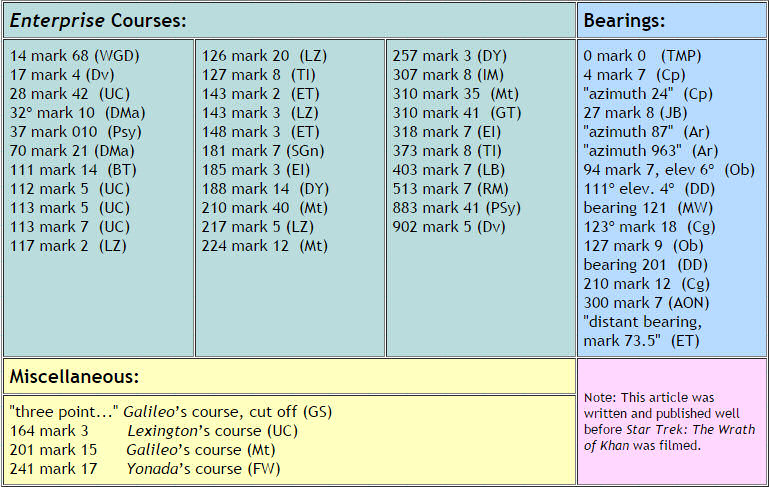
There are three things evident in the table. First, the first angles vary over a much wider range than the second ones do. Since any given star could be at any longitude from your position (there are stars all around us), but stars are confined in latitude to the disk of the galaxy (the Milky Way), it is obvious that the first coordinate is the longitude while the second, more restricted one is the latitude. Second, there are longitude values over 360 (sure, you can blame Freiburger, but that doesn’t make them go away). Since the highest used was 902, I have decided to divide the circle into 1000 which allows it to fit right, in with our beloved metric system. Third, there are no negative latitude values, If the system was arranged like Earth’s latitude and longitude, you would expect an equal number of positive and negative latitude values. The chances of getting no negatives in our sample is between 4.29 billion and 2.25 quadrillion to one. Obviously, the system is arranged so latitude is never negative.
From any position within the galaxy, it is fairly easy to plot courses.
Imagine a plane parallel to the plane of the galaxy, but passing through your position. This is the “equator.” “Up” will be the direction of the galactic north pole (N.G.P.) determined by astronomers. Draw a vector from your position in the direction that the nearest point on the edge of the galaxy is from Earth. This is the “zero vector.” Longitude of any direction is measured counterclockwise from this vector.
Once you have found the longitude, the latitude is measured “down” from a line inclined 25º to the “equator” plane. Thus the latitude of a stellar destination, most likely located in the disk of the galaxy, will be between 0º and 50º. Latitudes run from 0º to 275º (straight down) and from 775º (straight up) to 1000º (equivalent to 0º ). Just as Earth latitudes are never greater than 90º or less than 90º, these latitude values are never between 275º and 775º.
Bearings to objects are found in exactly the same way. They are tied to the galaxy like courses are, and the orientation of the ship does not affect them. The ship could spin around in a circle, but the bearing of a stationary object would remain the same. Thus, the bearing of an object in the ship’s line of flight would be equal to the ship’s course. This arrangement greatly simplifies the coordination of sensors, helm and fire control. It also ties in with the use of the “navigation map” at the center of the helm.
This device displays the region surrounding the Enterprise constantly, with the ship represented by the center of the map at all times. The stars and objects on the map are constantly moving in the opposite direction as the ship, keeping its position updated. If you remember or watch the final scene in “Arena,” you will see that this is so by Sulu’s comments. In any case, the bearings of and therefore courses to any objects are quickly obtainable by noting the object’s position relative to the circular longitude scale which encircles the map.
Although this system was never explained in the original series, every time that courses have been stated which can be related to real stars or places in the galaxy, they fit right in with the system. A course determined for the planet killer in “The Doomsday Machine” makes the courses Decker uses frontal assaults, consistent with what he said he was doing. A course determined for the ship at the end of “The Changeling” puts her moving away from Earth, a means of delaying Nomad, should it escape. Courses stated in “The Ultimate Computer” put it moving away from Earth, the logical place for any type of war gaming. A position for the Klingon Empire which can be determined from a course in “Day of the Dove” is consistent with both the Klingon activity on Capella (“Friday’s Child”) and the course of the Enterprise in the motion picture. Finally, the actual position of the Coalsack fits in with the position stated (in course data) during “Let That Be Your Last Battlefield.”
Here is the system in brief:
1) One circle equals 1000º. 2) Longitudes come first, counted counter-clockwise from the Sol-to-galaxy rim “zero vector”. 3) The work “mark” separates the two angles. 4) Latitudes come second, measured down from a zero vector inclined 25º to the equator plane. 5) Shipboard bearings are found in exactly the same manner. 6) Landing party bearings are the same, with these exceptions:
a) The ground surface is the horizontal plane. b) The zero vector runs from you to the north rotational pole of the planet, determined by tricorder. c) The latitude coordinate reflects ground inclination. If the ground is level, the latitude is not stated, as in “bearing 201” or “azimuth 87.” d) Objects above the surfaces are located with an angle of “elevation.” Noting rule ‘c’, this explains 94 mark 7, elevation 6 as well as “bearing 111º, elevation 4.”
Some of you may remember (rare) references to a 360° system, such as “a 360° scan” in “The Mark of Gideon” and “180º about” in “The Galileo Seven.” This is not necessarily an inconsistency, but instead, just another of the many 20th century “throwbacks” encountered in Trek as a result of the conservatism of the members of Starfleet. These terns have, through many years of use prior to the adoption of the 1000º system, become synonymous with a “complete circle” and “about face” respectively. This changing of the language is a natural thing, and has been seen in the past. It can also be used to explain such apparently inconsistent and anomalous terms as “quadrant” used in the original Star Trek.
Well, there it is, an example of how a pile of research, a little luck and some logic can build up consistent background material which fits the Star Trek universe in every way. Live long and prosper, and happy navigating!
- Show pagesource
- Old revisions
- Back to top

- Skip to main content
- Skip to primary sidebar
- Skip to footer

Lovarzi Blog
all the latest Doctor Who news

Star Trek terminology: A beginner’s guide to acronyms
December 15, 2021 by Philip Bates Leave a Comment
One of the first things you need to know about Star Trek terminology is that there are a lot of acronyms. A lot. And they’re not all simple. Doctor Who is easy: “TARDIS” stands for “Time And Relative Dimension In Space.” No, Star Trek has complex engineering and story-specific abbreviations like “M/ARA”, which means “Matter/ Antimatter Reaction Assembly.”
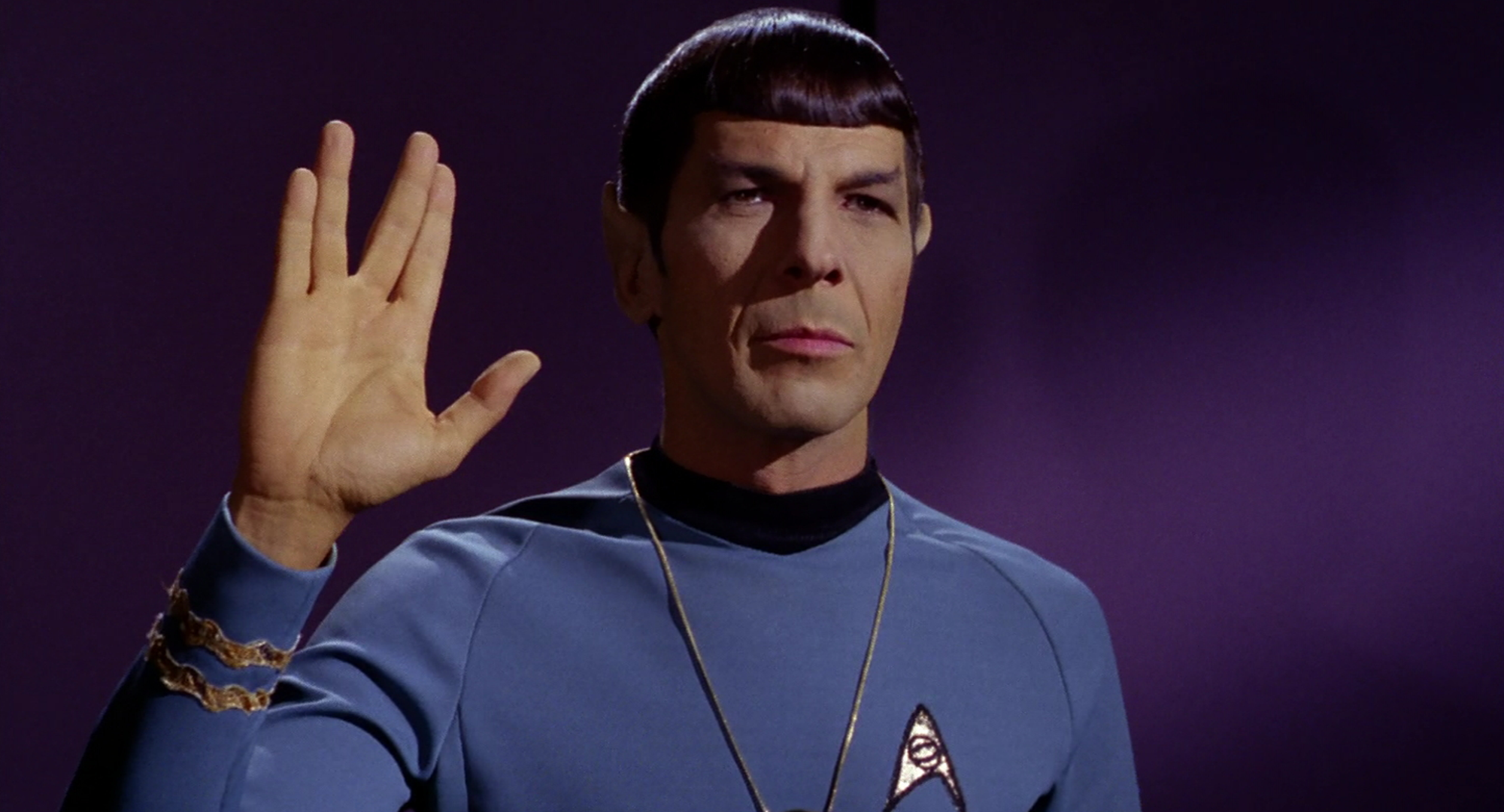
It can all be a bit intimidating, especially if you’re new to the worlds of Trek and don’t know your TNG from your LLAP. Fortunately, you don’t need to know them all. In fact, your enjoyment shouldn’t be inhibited whatsoever. But if you’re invested in Trek , you deserve an easy way into this sometimes-scary encyclopaedia of terms.
So here’s a brief beginner’s guide to acronyms and abbreviations commonly used by the Star Trek fandom.
What does Star Trek: TOS mean?
Here’s the perfect place to begin.
The ingenuous thing about Trek is that it spans the generations – and in doing so, spans numerous incarnations too. That results in a vast number of ideas, but it can cause a problem because fans need to quickly refer to specific TV shows. Hence “ST: TOS.”
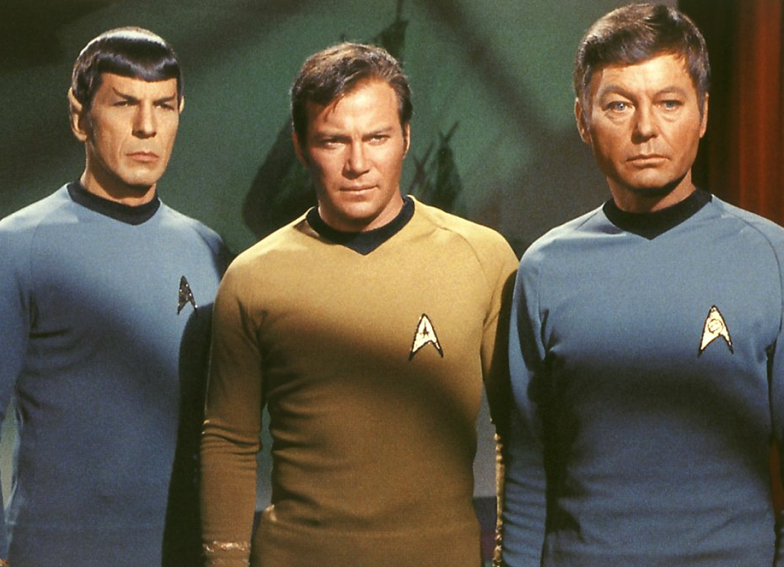
“ST” obviously means Star Trek , and “TOS” simply means “ The Original Series, ” i.e. the three-season show that ran from 1966 to 1969, and starred William Shatner, Leonard Nimoy , DeForest Kelley, and more.
This was even referenced in Star Trek: Lower Decks . Commander Jack Ransom mentions the “TOS” era, and when questioned over its meaning, he slyly says the acronym stands for “Those Old Scientists.” Nicely done, Trek writers!
What does Star Trek: TNG mean?
“TNG” is one of the most famous pieces of Star Trek terminology – and stands for one of its best-loved shows too: The Next Generation , which featured Patrick Stewart as Captain Jean-Luc Picard at the helm of the USS Enterprise between 1987 and 1994.
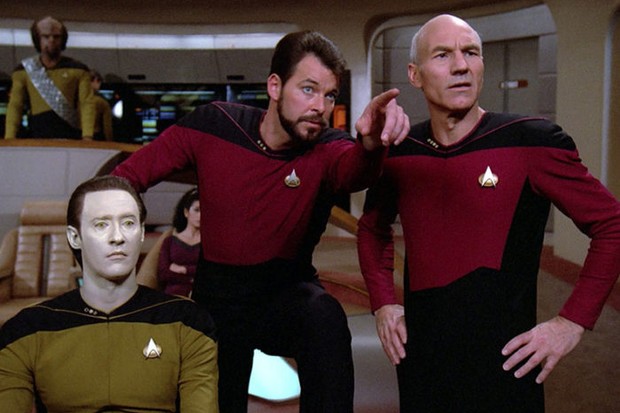
What does Star Trek: DS9 mean?
TNG proved so popular that another Trek series came about in 1993 and ran until 1999: Deep Space Nine , commonly referred to as “DS9” in Star Trek terminology.
Unlike previous iterations of Star Trek , this series was named after the space station that served as the main setting for the programme. From Deep Space Nine, Starfleet could explore the Gamma Quadrant via the Bajoran wormhole located nearby, thus giving viewers wider horizons than the premise might otherwise hint at.

What does Star Trek: VOY mean?
“VOY” means “ Voyager ,” the successful series that ran from 1995, following the cancellation of The Next Generation , and so proved an accompaniment to Deep Space Nine .
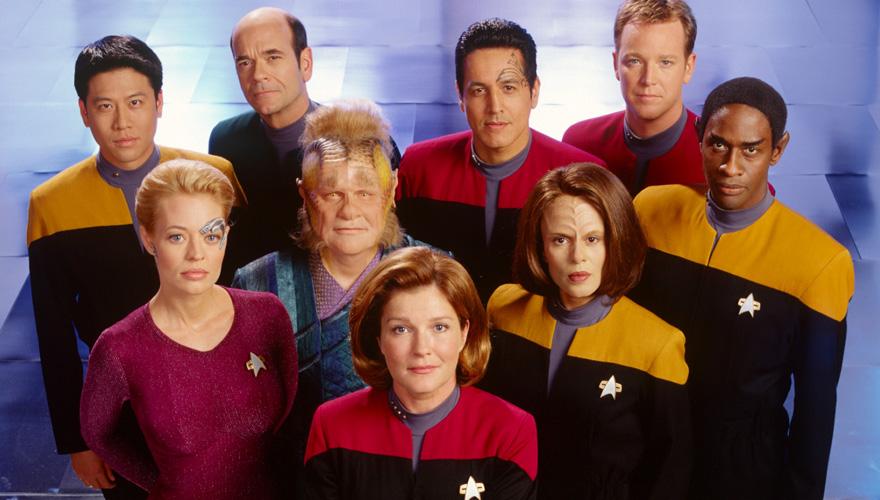
What does Star Trek: ENT mean?
You’ll probably have already worked out, based on the standard abbreviations formula within Star Trek terminology (and with some knowledge of Star Trek ‘s most famous ship) that “ENT” is short for “ Enterprise .”
ENT was a prequel to TOS and ran from 2001 (the year Voyager concluded) to 2005.

What is the acronym for Star Trek: Discovery?
In Star Trek terminology, the acronyms apply to all series and even movies, so yes, Star Trek: Discovery (2017 – present) has its own abbreviations. In fact, all the latest crop of Trek incarnations do: Lower Decks is “LD”; Picard is “PIC”; and Prodigy is “PROD”.
And Discovery is “DSC.” However, if you’re talking about it, it’s probably easiest to just call it “DISCO,” same as it is referring to Voyager by its name. These abbreviations are typically used in Star Trek terminology when discussing the wider universe of adventures. Let’s say you’re talking about how the Enterprise appears across different programmes: cite mentions as “(TOS),” “(ENT),” or “(DSC)” – and yes, you generally do so using brackets.

What does LLAP mean in Star Trek terminology?
But obviously, acronyms aren’t just useful when talking about TV series and movies. So “LLAP,” which you might’ve seen emblazoned on posters, clothing, stationery, and more Star Trek products doesn’t actually mention a particular show at all.
In Star Trek terminology, “LLAP” means “Live Long And Prosper,” Spock’s famous saying from TOS. It’s more often than not accompanied by the Vulcan salute; that is, a “V” shape formed using your fingers. You know the one.
It’s a phrase we love so much, we put it on an exclusively-designed knitted scarf – the full “Live Long And Prosper,” not the “LLAP” version, because we want to spread that inclusive message beyond even the massive Trek fandom.

What does IDIC mean in Star Trek terminology?
Here’s another piece of Star Trek terminology we thought was iconic enough to grace our Trek line of products , although you might not know it from the acronym “IDIC,” or even from the full, uncondensed version: “Infinite Diversity in Infinite Combinations”.
No, you’ll recognise it as the symbol that looks like a silver or grey pyramid pointing into a circle.
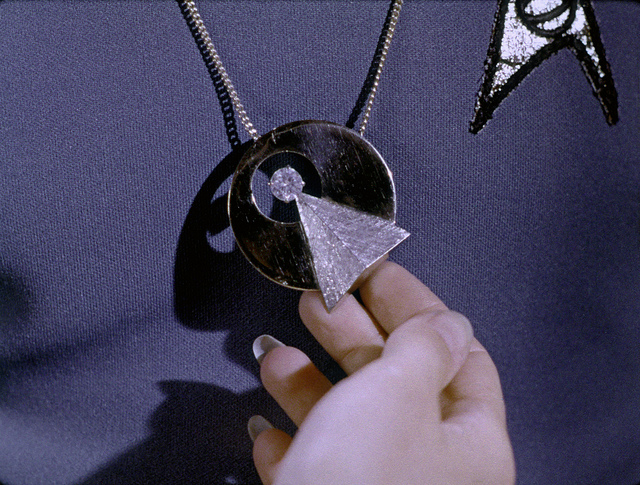
It’s known in the Vulcan language as Kol-Ut-Shan. Its philosophical meaning translates across all linguistic boundaries. In ‘Is There in Truth no Beauty?’ (TOS), Miranda and Spock say that “the glory of creation is in its infinite diversity,” and “the ways our differences combine to create meaning and beauty.”
What does GNDN mean in Star Trek terminology?
There are loads of acronyms to learn – perhaps too many. This is only the start of a Trek voyage, and there’s always time to find out more. And so, for now, we’ve saved the best to last.
You might have spotted the “GNDN” label on pipes throughout the original USS Enterprise in TOS. Pipes running through the walls had set colour combinations and coding designations, which helped build up the intricate depth of details put into the ships. And while many did have actual meanings, “GNDN” is really an in-joke. In the TOS Season 2 DVD special feature, Designing the Final Frontier , set designer John Jefferies, finally revealed what this acronym means.
“GNDN” simply means “Goes Nowhere, Does Nothing.”
It’s a brilliant gag, and so unlikely for a show whose horizons stretch out, “to explore strange new worlds, to seek out new life and new civilizations – to boldly go where no man has gone before!”
What is your favourite piece of Star Trek terminology? Are there any fun in-jokes that always crack you up? Let us know in the comments section and on social media!
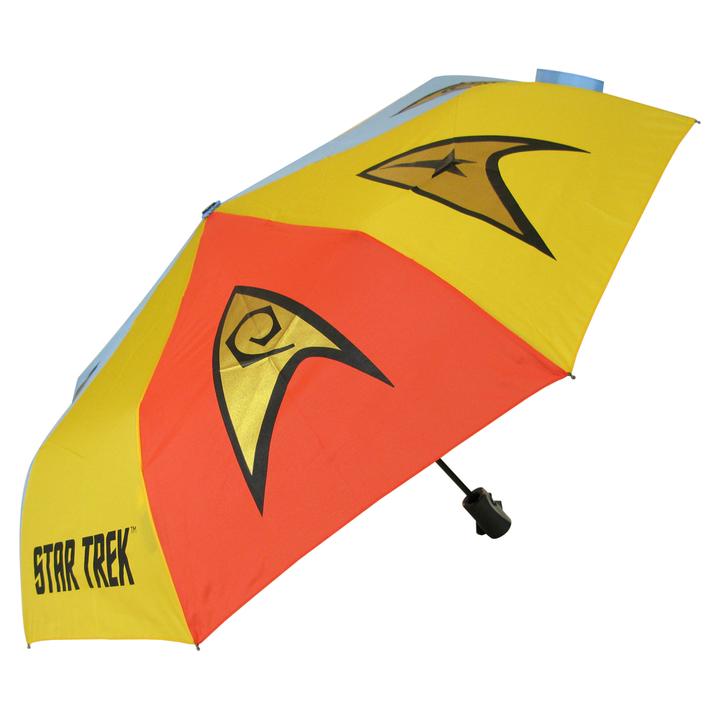
Star Trek umbrella – order now from the Lovarzi shop!
Shop on Amazon
Latest posts….
- The best Doctor Who season openers
- Celebrating 50 years of the Fourth Doctor
- Looking back at the best Doctor Who storylines
- The best Doctor Who season finales
- Why did the 60s Doctor Who companions leave so suddenly?
Reader Interactions
Leave a reply cancel reply.
Your email address will not be published. Required fields are marked *
Save my name, email, and website in this browser for the next time I comment.
About Lovarzi
At LOVARZI, what we do is always about you first.
We are an authorised licensee of Doctor Who, Star Trek and IWM (Imperial War Museums.) We’re incredibly proud to be part of such dedicated and passionate fandoms. Without you we would not have been able to produce such a great range of products.
Shop the full range at lovarzi.co.uk.
Star Trek Glossary: Every Starfleet Rank And Job Explained
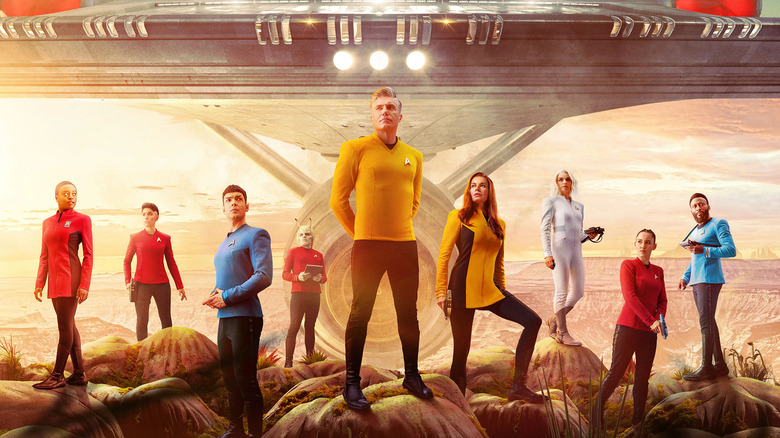
"Star Trek" is, first and foremost, a workplace drama . It just so happens that the workplace is a high-tech, faster-than-light space vessel exploring distant regions of the galaxy. Working on a starship is a fine job indeed. Many classic "Star Trek" episodes deal with rank, the chain of command, and how certain captains employ their unique managerial styles to inspire the officers beneath them. The main characters in "Star Trek" mostly all belong to Starfleet, a military-like organization that uses naval ranks and nautical vocabulary to describe a starship's operations.
To give the shows a touch of realism, the makers of "Star Trek" have (mostly) been careful to point out that a starship is a massively complex machine that requires hundreds of people to operate correctly. Additionally, the day-to-day logistics of running a starship require departments within departments, each one run by its own miniature team of officers, and with each team making sure that every small piece of equipment is operating at peak efficiency. Ideally, a starship can't be flown by a single person or even a scant bridge crew (I will happily ignore, however, the times that it was; those times don't count).
Trekkies take a great deal of delight in tracing and detailing the various ranks and departments on board an average Starfleet vessel, mostly because it makes it easier to imagine actually working there someday. Yes, we know it's fictional, but so much detail had gone into rank, operation, and propriety on "Star Trek" that many viewers can picture where they might be able to practically work, what their rank might be, and whom they would answer to.
For the laypeople reading, however, here is a brief rundown on the ranks, jobs, and positions one might encounter in "Star Trek."
The Starfleet ranks calling the shots
Here is the central chain of command withing Starfleet, listed from top to bottom.
At the top of Starfleet are the admirals. Admirals typically serve in official positions and don't usually command starships. They are essentially the management that starship captains have to report back to. The head of Starfleet — Commander in Chief — bears the top rank of Fleet Admiral .
Below Fleet Admirals are just regular Admirals , which are plentiful in "Star Trek."
Vice Admirals serve below them (the officer picture above bears the rank pips of a Vice Admiral), followed by Rear Admirals .
A lesson: don't trust Admirals .
We don't see too many Commodores on "Star Trek," but they are the rank in between Captain and Admiral.
Below the Commodores are Captains , who, as we all know, tend to command starships. The Captains can give orders to any officers on their ship. Captains tend to be the central characters of "Star Trek" shows, so we already know James T. Kirk, Jean-Luc Picard, Benjamin Sisko (Avery Brooks), Kathryn Janeway (Kate Mulgrew), Jonathan Archer (Scott Bakula), and, most recently Christopher Pike (Anson Mount) on "Strange New Worlds."
Directly below the Captains are Commanders . A ship's first officer is a Commander, as are a few other key figures on a ship like a Chief Medical Officer or a Counselor. Riker (Jonathan Frakes) and Spock (Leonard Nimoy) are Commanders.
Immediately below the Commanders are Lieutenant Commanders , who also tend to serve notable executive functions on a starship. People of lower ranks can indeed become members of a ship's senior staff (the "main" officers on a ship that spend the most amount of time on the bridge), but Lieutenant Commanders tend to be the lowest-ranking officers who still command their own departments on a ship.

The Starfleet ranks taking the orders
One might note that Starfleet officers wear color-coded uniforms. The colors represent the general departments in which they work. In the original series, officers on the command track wore gold uniforms, medical officers and science officers wore blue, and red was reserved for those who worked in engineering, security, or operations. In the era of "Star Trek: The Next Generation," red and gold uniforms switched .
There must, of course, be grunt workers and mid-managers below the department heads listed above, and that's where the lower-ranking, junior officers come in.
Mere Lieutenants are immediately below Lieutenant Commanders. They may lead special projects or work on the bridge, but they take more orders than they give.
Below them are officers ranked Lieutenant (Junior Grade) , followed by Ensigns . To become a Starfleet officer, one must spend at least four years at Starfleet Academy. Graduates are typically promoted to the rank of Ensign and given their first assignments immediately. "Star Trek: Lower Decks" is all about Ensigns and Junior Grade Lieutenants like Brad Boimler (Jack Quaid) and Beckett Mariner (Tawny Newsome).
Not every officer on a ship graduates from the Academy, however. One can enlist in Starfleet and become a Petty Officer. These people have their own subset of operational concerns, usually zeroed in on specific areas of the ship like the transporters, food services, or basic security.
The Petty Officers have their own ranking system, starting — highest first — with Master Chief , then Senior Chief , followed by Chief , then Petty Officer First Class , and finally Petty Officer Second Class . Yeomans are petty officers who take care of paperwork for officers. Chief Miles O'Brien (Colm Meany) was a transporter expert.
Other specialists — historians, botanists, etc. — can be Petty Officers.
Back at Starfleet Academy, meanwhile, Cadets have their own ranking by year. Freshmen are 4th Class , sophomores are 3rd Class , juniors are 2nd Class , and seniors are 1st Class . For a large portion of "Star Trek: The Next Generation," Wesley Crusher (Wil Wheaton) was a cadet. This was after he already held a position as Acting Ensign , a provisional rank given in the field.
Starfleet Command and Bridge positions
One might have noticed watching the original "Star Trek" that Lieutenant Uhura (Nichelle Nichols) always sits at the same station on the bridge of the Enterprise, as does Sulu (George Takei), Chekov (Walter Koenig) , and Spock (Leonard Nimoy). This is because they have been assigned one of the many official bridge positions on a Starfleet vessel. The positions must be filled, regardless of an officer's rank.
The Commanding Officer on a starship is usually the captain. The (non-capitalist) buck stops with them.
Answering directly to the captain, and communicating most directly with the crew is the Executive Officer or the First Officer, usually bearing the rank of commander.
Third in command is the Second Officer , who can also hold other operational positions; on "Star Trek: Voyager," for instance, Tuvok (Tim Russ) serves as both Second Officer and Security Chief.
Sitting in front of the captain and piloting the ship are the Helmsman at conn to the captain's right and the Operations Officer at Ops to the captain's left.
The Helmsman may also be officially the ship's Navigation Officer , an expert in spatial physics and stellar cartography. Expert pilots likely sit at the conn, but also may be selected to pilot smaller, supporting crafts like shuttles or runabouts. These officers are sometimes appointed the Chief of Flight Control . Example: Tom Paris (Robert Duncan McNeill) on "Voyager."
In charge of hailing vessels, translating, and sending coded messages is the Communications Officer . On the original series, Uhura was a dedicated Communications Officer, while on "Next Generation" and beyond, other officers took on communications as part of their jobs. Worf (Michael Dorn) served as both Communications Officer and Security Chief.
Starfleet Science and Medical positions
Most Starfleet vessels are devoted to research and explorations, and there are multiple departments — and corresponding commanding officers — tasked with overseeing the details.
A ship's Science Officer is in charge of research and serves as coordinator of all the ship's specialized science fields. Science Officers must have a head for numbers and objective detail. On the original "Star Trek," Spock served as the Science Officer and the Executive Officer. On "Voyager," Seven of Nine (Jeri Ryan) served as a Science Officer, and she only held the rank of Master Chief Petty Officer.
A ship's Chief Operations Officer is like the Science Officer but oversees the technical aspects of the ship, including engineering, the engines, the life support, and other vital systems. Like the Science Officer, it helps that the Chief Ops Officer has a mind for technical details. On "Next Generation," Data served as Chief of Ops and worked closely with the Chief Engineer (which we'll get to in a minute).
Also, because a ship is full of biological organisms, it's important that their health be maintained. Every ship has a medical department overseen by an indispensable Chief Medical Officer , the only officer on the ship who can give orders to the Captain. Each medical department also has a network of experts and nurses, including the Head Nurse like Nurse Chapel (Jess Bush) on "Strange New Worlds" or Nurse Ogawa (Patti Yasutake) on "Next Generation." There may sometimes be a Head of Surgery , or perhaps a dedicated pathologist or epidemiologist. For the most part, though, the Chief Medical Officer takes care of many of these things themselves.
Starfleet Security and Combat Positions
Starfleet vessels are dedicated to peace, diplomacy, and study, but there are still violent, antagonistic species in the galaxy, and Starfleet isn't always on the best terms with them. As such, each Starfleet vessel requires experts in on-ship security, ship-to-ship tactics, and weapons operations.
Every ship will have a Chief of Security , responsible for confronting intruders, enforcing the on-ship laws, and perhaps throwing ruffians into the ship's brig. The Chief Security Officer often also serves as the Strategic Operations Officer , who sits at the tactical position and fires weapons at the captain's command. Worf and Tuvok were in charge of these positions on their respective shows. They tend to go on the most away missions, keeping the other officers safe. They are the only officers on the ship who are always armed. Odo (René Auberjonois) served as chief of security on "Star Trek: Deep Space Nine," but he wasn't a Starfleet officer. He worked for the Bajoran government, and they implemented a different military system altogether.
As mentioned above, basic security officers are not Starfleet Academy graduates, and typically serve as Petty Officers, answering only to the Chief of Security.
Starfleet Engineering and Technology Positions
As mentioned above, the Chief Operations Officer coordinates the technical aspects of the ship, but the hands-on officer in charge of a starship's massive engine room is the Chief Engineer , the one who actually makes repairs and oversees all of the other repairmen. No ship can function without a Chief Engineer overseeing all of the other engineers on the ship, busily readjusting and calibrating the physical machinery used to make the Enterprise go.
The Chief Engineer might oversee technical experts, such as Warp Engineers (who oversee the faster-than-light engines), Impulse Engineers (who oversee the sub-light engines), those who oversee shields, transporters, electrics, life support, food replicators, lighting, gravity, or just about anything with a technical component. Thanks to "Next Generation," Trekkies know all about a dedicated Transporter Chief . There will also be an officer dedicated to Environmental Controls (especially important if your ship hosts species from hotter or colder worlds than Earth), and one devoted to Computer Operations , which might be the "Star Trek" equivalent of the I.T. repair guy. Heck, one might even find an engineer devoted to Holography systems, an expert in repairing holodecks.
"Star Trek" doesn't feature a lot of tool belts, but if it did, the Engineering department would wear them.
Kudos to LeVar Burton, who played Chief Engineer Geordi La Forge on "Next Generation." More than any other actor, he needed to memorize Trek's well-worn, multisyllabic techno-jargon. He talked a lot about warp fields, phase coils, plasma inducers, dilithium crystals, and every other high-tech widget on the Enterprise. And of course, everyone loved Scotty (James Doohan) from the original series.
Other Starfleet Positions
All the above departments are devoted to the vital function of a Starfleet vessel and the health of a vessel's crew. There are also various ancillary positions on a ship devoted to either comfort or just basic organization.
In the days before replicators , Starfleet vessels required Quartermasters or Supply Operations Officers to distribute physical objects to the crew. The Quartermasters would distribute emergency rations, spare uniforms, tricorders, and medical widgets. These would be the ones holding the stock clipboards. Despite "Star Trek" taking place in a technical utopia free of want, there are still only so many scanners and tricorders that can go around. Starships also require dedicated officers to oversee the cargo bays where shuttles and extra supplies are stored, hence a head of Cargo Operations .
Being the Waste Management Officer on a starship isn't too terrible, although one does have to clean out the poop filters occasionally. The poop is then salvaged, broken down, and converted into energy. That energy is used in a ship's food replicators. Yes, Starfleet officers eat their own poop . On "Lower Decks," Mariner is seen cleaning the waste filters out of the holodeck on the U.S.S. Cerritos. It's a gross job.
Not every ship has a specialized department for every situation, so other specialists may be called in as needed. During times of war or combat, for instance, a ship may be assigned an Intelligence Officer . This depends on the ship's current mission, of course. For diplomatic envoys, a ship may also be assigned a general Special Services officer to make sure negotiators and treaty signers are comfortable.
And, perhaps most importantly, many ships have a Counselor . On "Next Generation," Counselor Troi (Marina Sirtis) sits right on the bridge. On other ships, they have their own offices. They take care of a crew's overall mental health, serve as para-diplomats, and work with the Chief Medical Officer.
Which job would you want?
By comparing the measured Altitude to the calculated Altitude for your Estimated Position, a Position Line may be drawn on your map or chart.
The celestial body will be in one of four Azimuth Quadrants. If it is to the NORTH WEST, (Azimuth 0� to 90�), then it is in the NORTH WEST quadrant and so on for the SOUTH WEST, SOUTH EAST and NORTH EAST.
The Declination of a celestial body is the latitude of its Geographical Position North or South of the Equator.
A plane through the centre of the earth intersects the surface of the earth on a Great Circle. So the centres of Great Circles are always at the centre of the earth.
The Greenwich Hour Angle (GHA) is the angular distance to the Meridian of the celestial body, as measured Westwards from the Greenwich Meridian (0� Longitude, also called the Prime Meridian).
The Geographical Position of a celestial body it that point on the earth's surface where the body is directly overhead, or at its zenith. This position is usually expressed in terms of the Greenwich Hour Angle (GHA) and the Declination (Dec.) of the celestial body.
The visible Horizon, as seen from a ship at sea, is actually at an angle slightly below the sensible Horizon due to the curvature of the earth. Almanacs will give "Dip Tables" to account for the difference in angle between the visible and sensible Horizons.
With a marine sextant, it is a simple matter to determine the Index Error each time the sextant is used by viewing a celestial body through the horizon mirror and the via the index mirror at the same time. The two images should coincide when the index arm indicates a reading of 0� on the arc. Any difference from exactly zero degrees is the Index Error. The measured Altitude can then be corrected for the Index Error. With a bubble sextant, the Index error needs to be determined by a set of sights on a celestial body such as Polaris (which moves very little in the sky) from a known position. The difference between the measured Altitude and the calculated Altitude is then due to Index Error. Obviously, it is not possible to determine the Index Error for a bubble sextant very frequently.
A Meridian is a Great Circle line which passes through the poles of the earth. A local Meridian is one that passes through the observer's local position. The Greenwich Meridian passes through Greenwich, England, and is defined as having 0� Longitude.
The "Nautical Almanac" is published by Her Majesty's Stationary Office in the United Kingdom and by the US Government Printing Office in the United States. It gives the positions for the Sun, the Moon, the visible planets and 58 selected stars for each day of one year, from which the Geographical Position of those celestial bodies may be obtained. It also has a concise set of Sight Reduction Tables .
The Estimated Position is the latitude and longitude at which the observer estimates his position to be, before fixing his actual position with the use of a sextant.
If the measured Altitude is less than the calculated Altitude, your actual position is further away from the Geographical Position than your Estimated Position. A contra-Azimuth line is drawn from the Estimated Position at an angle equal to the Azimuth + 180�. The Position Line is then drawn at 90� to this line.
Sight Reduction Tables are sets of tables from which the calculated Altitude and Azimuth of a celestial body may be obtained from an Estimated Position . They range from a set of volumes that would fill a long shelf, to slim volumes of "concise" sight reduction tables. In general, the larger the volume(s) of tables, the quicker they are to use. The Nautical Almanac has a set of concise sight reduction tables in the back, as does the "Long Term Almanac 2000 - 2050 " by Geoffrey Kolbe.
Words We Know Because Of Star Trek
Star Trek is one of the most beloved science fiction television franchises to ever air. Debuting in 1966 with Star Trek: The Original Series , this long-running franchise is about the crew of a starship (spaceship), the USS Enterprise , as it explores the deepest depths of outer space. Along the way, the crew meet new life forms, get into all kinds of hijinks , and battle for their lives. The show is particularly known for the way it implicitly and explicitly addresses issues of race; in fact, the original series featured one of the first multiracial casts on American television.
Over time, the Star Trek franchise—which now includes movies, books, comics, and even an animated series—has had an enormous influence on popular culture. Terms and expressions from the show, like live long and prosper , have become part of the general lexicon, even for people who couldn’t pick Captain Kirk out of a lineup (hint: it’s the guy who looks like William Shatner).
There are dozens of terms that Star Trek has contributed to the English language. We’ve picked out just a handful of expressions the show created or popularized to highlight their meanings and origin stories. Read on if you dare.
To boldly go where no man has gone before
It sounds like something JFK would say, but it was actually popularized by Star Trek . “Where No Man Has Gone Before” is the name of the second Star Trek pilot, which eventually became the third episode of the first season of the original series—got that straight? It was written by Samuel A. Peeples, a prolific television writer best known for his Westerns.
The expression itself made its way into the voiceover by Captain James Tiberius Kirk (played by William Shatner) that opened every episode of the original run of show:
Space: the final frontier. These are the voyages of the starship Enterprise. Its five-year mission: to explore strange new worlds. To seek out new life and new civilizations. To boldly go where no man has gone before.
In the series Star Trek: The Next Generation (1987–1994), the language was changed to no one has gone before to be more gender neutral.
The expression itself has gone far from its origins and become a reference point for memes and snowclones in its own right. For instance, the phrase “to boldly go where no woman has gone before” is used variously to discuss women in STEM research, running large companies, or winning a presidential election in the United States.
To boldly go where no [x] has gone before has caught some flack as an expression because it uses a split infinitive . In other words, the infinitive verb to go is “split” or separated, by the adverb boldly . But frankly, to go boldly where no [x] has gone before just doesn’t have the same ring to it.
Resistance is futile
Resistance is futile is the nihilistic catch phrase used by the perennial baddies on the show, the Borg. The Borg are a collective of cyborg aliens that our protagonists frequently skirmish with; they are utopians who ruthlessly pursue perfection at all costs.
The specific phrase resistance is futile was first uttered by a Borg in the film Star Trek: First Contact (1996). However the exact phrase was used once in a ’70s TV series Space: 1999. A different version of the phrase, “resistance is useless,” was used by Douglas Adams in Hitchhikers Guide to the Galaxy and in Doctor Who , as early as the ’60s or ’70s.
Resistance is futile and its variations, like it is futile to resist , has become a stock phrase of movie villains in general since the Star Trek usage. Doctor Who even switched over to this phrasing when reoccurring baddie The Master in the popular Doctor Who series says resistance is futile in season 14, episode 9, “The Deadly Assassin.” It also has more broadly permeated popular culture. For instance, conservative television personality Ann Coulter published a book entitled Resistance Is Futile!: How the Trump-Hating Left Lost Its Collective Mind in 2018.
Live long and prosper ( the Vulcan salute 🖖)
One of the main characters on Star Trek is Mr. Spock (played by Leonard Nimoy), who is a member of the Vulcan race, an alien people who are known for their pointy ears and aversion to emotion. Members of the Vulcan race greet each other with the hand salute (raising their hand with a separation between the middle and ring fingers).
Nimoy first used the gesture in the 1967 TV episode “Amok Time,” in which Spock comes into contact with other members of his Vulcan race.
Nimoy wanted the Vulcans to have a way of greeting one another similar to human hand gestures. In an interview with the New York Times , Nimoy said that his Vulcan salute was inspired by a gesture that he witnessed during a Jewish religious service when he was a boy. Jewish priests perform the actual religious gesture with both hands to form the Hebrew letter shin , ש.
The greeting Live long and prosper! has also accompanied the Vulcan salute ever since its debut. Deuteronomy 5:33 is most cited as the inspiration for the phrase.
Star Trek fans and nerds alike are prone to use the salute, the expression, or both as a sign of their geek pride.
Prime Directive
In the world of Star Trek , our protagonists work for Starfleet, an intergalactic space force dedicated to exploration and diplomacy (think UN Peacekeepers, but in space). Starfleet crew are expected to follow the Prime Directive . Prime means “first” and directive refers to an official order or mandate. The Prime Directive is never explicitly stated on the show, but based on references throughout the franchise, fans have determined it means that:
- The crew cannot interfere with the development of another society; and,
- every species has the right to live as it wishes without interference by another.
These principles were developed by the show’s creators as a statement against American intervention in Vietnam.
Despite how official it sounds, there are a lot of examples of the Prime Directive being violated by characters on the show. Nevertheless, references to the Prime Directive percolated into the popular culture … and even academic study. It’s particularly used in reference to the ethics of interventionism —whether in concrete applications like foreign policy, or further afield (such as discussing possible contact with sentient extraterrestrial life forms).
Beam me up, Scotty
Beam me up, Scotty is a catchphrase from the television show and film series Star Trek . It can stand on its own as an allusion to the show; it can be used to comment on something retrofuturistic; or it can serve as a humorous request to escape a certain situation.
In Star Trek , characters “ beam ” up and down from their ship to various planets by means of a teleporter. Requests for the chief engineer, Montgomery Scott, nicknamed “Scotty,” to beam up or beam down are common throughout the series. The phrase Beam me up, Scotty is especially associated with Captain Kirk, the captain of the Starship Enterprise.
Beam me up, Scotty is one way of saying “get me out of this place” or expressing rhetorical frustration with the world around you. Evidence for these senses, sometimes extended to “Beam me up, Scotty, there’s no intelligent life down here ,” date back to the 1980s, especially used in difficult legal or business contexts.
Oddly enough, despite the popularity of the phrase, this exact catchphrase never actually appeared on any episode of the show. (For example, the original film series used “Scotty, beam me up” in Star Trek IV: The Voyage Home. )
Imagine this: you’re a young actor, and you’ve just been cast on an episode of Star Trek. You’re thrilled! Maybe this will become a regular gig. You get to the set and the wardrobe manager hands you … a red shirt. Your heart sinks. Why?
In the original series of Star Trek , of which there were three seasons, background characters wore red uniforms in contrast to the main cast’s blue or gold uniforms. And these background characters frequently bit the dust. According to an analysis by fan Matt Bailey, 73 percent of the crew members who died in the original series were wearing red shirts. (A different analysis determined that proportional to the rest of the crew, red shirts were not more likely to die than gold or blue shirts, so take it for what you will.)
This trope became known as a redshirt or, in other words, characters who are included just so they can be killed off later. While the name might come from Star Trek , it was hardly the only TV show or movie to engage in this practice. A classic example of a redshirt is the character that appears at the beginning of a murder mystery who is killed off to get the ball rolling.
If you’re traveling in a spacecraft at a (very hypothetical) speed faster than light, you’re moving at warp speed . Warp speed draws on earlier references to warps —metaphorical twists—in time and space during interstellar travel in science fiction. Dating back to science fiction in the 1950s, a time warp , for instance, would allow movement back and forth in time or suspend the passage of time. (Again, extremely hypothetical stuff.)
In the world of Star Trek , ships are outfitted with warp drives that allow them to move at superluminal speeds, or warp speed . Since Star Trek , warp speed has spread as a term for “extremely fast” more generally. Buckle up.
Check out this article we did with the Langley Research Center at NASA to take your vocab on a trip through outer space, too.
trekkie | trekker
The word trekkie , or the less-common trekker , is a word used to describe die-hard Star Trek fans. According to popular lore, the word trekkie was coined by show creator Arthur W. Saha in 1967 though not attested until later. Trekkie is actually predated by the word trekker , which was used by a fan in a letter to the editor printed in the March 4, 1967 edition of TV Guide .
Either way, trekkies or trekkers are known for cosplaying as their favorite characters, discussing the show endlessly with one another, and generally enjoying the Star Trek fictional world. Trekkies are stereotyped frequently in popular culture as dweeby nerds, but the truth is that there are a lot of different kinds of Star Trek fans. This has caused some to adopt the word trekker to refer to Star Trek fans who might not fit the classic stereotype.
One of the many alien races in the Star Trek universe are the Klingons. These are, frankly, pretty monstrous-looking beings and their language (which is also called Klingon) sounds pretty scary. But, it is a language . In fact, American linguist Marc Okrand created an entire Klingon language, of which there were about a dozen fluent speakers as of 1996 (the last time a study was done).
Reference to the Klingon language, also known as Klingonese, is found throughout popular culture. Generally, when a character knows Klingon in television or movies, it’s shorthand for “nerd.” Additionally, Klingon has gone far beyond the Star Trek universe. There are books, theater performances, and even at one point a Wikipedia in Klingon. Not bad for a totally fictional language! J.R.R. Tolkien would be jealous.
Want to know about more fictional languages? Read about them here.
(Vulcan) mind meld
If you’ve ever felt you’ve read someone’s mind, you might have experienced a Vulcan mind meld . It’s unknown where the word meld comes from, but it’s believed to be a combination of the words melt and weld , which gives you a pretty good sense of what happens during a Vulcan mind meld .
On the show, Mr. Spock and other members of the Vulcan race are able to read someone’s thoughts, see their memories, and even at times feel their emotions. It’s essentially a power that allows people to communicate with their mind—in other words, telepathy .
In the popular lexicon, a Vulcan mind meld , or simply a mind meld is used to describe a similar phenomenon: when two people are so in sync that it is as if they are of one mind. No Vulcan powers required.
If you’re curious about other words that originated from the sci-fi universe, check out these words.

Trending Words
[ strey -t uh m, strat - uh m ]
- By clicking "Sign Up", you are accepting Dictionary.com Terms & Conditions and Privacy policies.
- Phone This field is for validation purposes and should be left unchanged.
How Do Star Trek Stardates Actually Work?
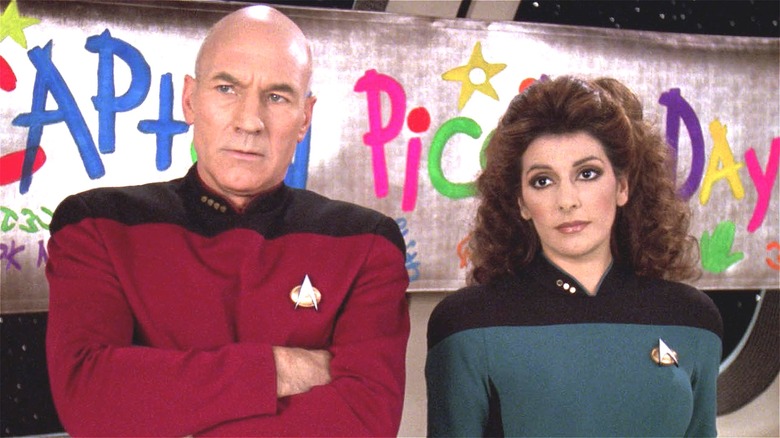
There are few handier delivery mechanisms for "Star Trek" exposition than a Captain's log entry, crucial Starfleet records that mark time with "stardates" — an enigmatic calendar system integrating decimals into each date. Although based on a real-world astronomical dating system, the Starfleet version doesn't make a ton of sense because it was never meant to, which is why the "Star Trek" timeline can seem confusing the deeper you dig into it.
As outlined in a 1967 "Star Trek" writer and director's guide, "The progression of stardates in your script should remain constant but don't worry about whether or not there is a progression from other scripts." Still, understanding the Julian date system can be a good starting point for those who care to try.
Speaking with The Space Review in 2019, "Star Trek: The Original Series" technical advisor Kellam de Forest explained that the futuristic calendar system was inspired by the Julian day — the solar day measurement used in the 365-day Julian solar dating system that predated the Gregorian calendar. Because the Julian day system creates a continued count of dates from the beginning of the Julian period, the ease of calculation between two dates without breaks has made it the preferred calendar for many scientific applications, including astronomical software. Julian dates are calculated by adding the Julian day — that is, the solar day since the beginning of the Julian calendar — and then adding a decimal point to indicate the fraction of the day that has passed since noon in Universal Time Code (UTC). Although the Julian date calculates days running into the millions, only the final five digits are commonly used by astronomers — and just four are used in "Star Trek."
Star Trek's stardates are intentionally difficult to calculate
According to the "Star Trek" writer's guide, the Starfleet calendar system was invented to deemphasize the in-universe date. As the guide puts it, "We invented 'Stardate' to avoid continually mentioning Star Trek's century (actually, about two hundred years from now), and getting into arguments about whether this or that would have developed by then."
Speaking on the 1988 documentary "Inside Star Trek: The Real Story," de Forest emphasized that this almost wasn't the case since the original script contained dates from the Gregorian calendar. Upon reviewing the script, de Forest felt this didn't feel right for the future spacefaring society. As a solution, he pitched the Julian-inspired concept, which the tech advisor felt had a futuristic vibe thanks to its use of decimals.
While "Star Trek" creator Gene Roddenberry liked the concept as a jumping-off point, his version was always meant to be a little esoteric, as Samuel A. Peeples, who wrote the second pilot for "Star Trek: The Original Series," recounted in "Gene Roddenberry: The Myth and Man Behind Star Trek." According to Peeples, "We tried to set up a system that would be unidentifiable unless you knew how we did it." Conceptualizing the revised stardate system over drinks, Roddenberry and Peeples took into account the weirdness of space and relative time, ultimately concluding that any date-related continuity errors in "Star Trek" could be chalked up to these issues. Or as the "Star Trek" writer's guide put it, "Stardates are a mathematical formula which varies depending on location in the galaxy, velocity of travel, and other factors, can vary widely from episode to episode." In other words, don't think too hard about it.

Advanced Navigation
- View history
Advanced Navigation was a course offered at Starfleet Academy for cadets studying navigation .
In the 23rd century , Cadet Christopher Pike completed this course, earning a grade of "A". ( DIS : " Brother ") Later, in that same century, Cadet Spock completed this course, earning a grade of "A+". ( SNW : " Among the Lotus Eaters ", display graphic )
Cadet Paul Rice took one of the course's final tests while at the Academy in the 2350s . The test had three options to it. Rice, however, rejected all three solutions and used one of his own instead. Rice's new option paid off, earning him the top mark in his class and his solution a permanent place on the list of possible options.
William T. Riker mentioned this fact to Jean-Luc Picard in 2364 as an example of how Rice's confidence in himself was not misplaced. ( TNG : " The Arsenal of Freedom ")

IMAGES
VIDEO
COMMENTS
Navigation was the science of locating the position and plotting the course of ships, aircraft, and spacecraft; in the last case, the term was sometimes referred to as astrogation. Travel from one star system to another was called intersystem navigation. By the mid-23rd century, the Medeusans had developed interstellar navigation to a fine art. During this time, Hikaru Sulu was considered a ...
Navigation Main page; Contents; Current events; Random article; About Wikipedia; Contact us; Donate; Contribute Help; Learn to edit; Community portal; Recent changes; ... Terminology that relate to Star Trek, particularly technical terms. This category is used primarily to reduce the number of articles in Category:Star Trek.
In navigation, the heading was used to describe directions in space. Headings were programmed in at the ship's helm control using a combination of two 360-degree directions on planes that are at right angles to one another, separated by the word "mark". (TNG: "Datalore") The given heading can be used to determine the course or direction that a starship was actually moving. (TNG: "Unification ...
Memory alpha is considered to be the "go-to" reference guide for Star Trek technical gobbledegook. Please note that while many of the words you hear on the show are real, there's also a fair amount of pure treknobabble scattered in there as well.. You can usually see the correct spellings if you locate a script guide or read the online transcripts for various episodes.
In Starfleet, the navigator held the position responsible for projecting the course of a starship and for determining a ship's position, velocity, and direction in relationship to a course. The navigator could also use the ship's navigational sensors to determine the positions, speeds, and trajectories of other objects. Additionally, in the 2250s and 2260s, a navigator was in charge of ...
Here is the system in brief: 1) One circle equals 1000º. 2) Longitudes come first, counted counter-clockwise from the Sol-to-galaxy rim "zero vector". 3) The work "mark" separates the two angles. 4) Latitudes come second, measured down from a zero vector inclined 25º to the equator plane.
In Star Trek terminology, "LLAP" means "Live Long And Prosper," Spock's famous saying from TOS. It's more often than not accompanied by the Vulcan salute; that is, a "V" shape formed using your fingers. You know the one. It's a phrase we love so much, we put it on an exclusively-designed knitted scarf - the full "Live Long ...
A STAR TREK GLOSSARY. Your starship has dropped out of warp and settled into orbit around the earth-like planet. You beam down, phaser drawn and ready. You're eager to take on the aliens -- Romulans, Cardassians, the nasty Ferengi , or even your supposed allies, the bad-tempered Klingons. You've done the holodeck drill so often you're confident ...
5. In Star Trek, what is the difference between the navigator and the helmsman? Generally, the helmsman seems to be much more important, or at least does much more manual work. Memory Alpha's descriptions seem to be pretty congruent in both its articles on helmsman and navigator. In the series, the navigators (Sulu, Tom Paris, Keyla Detmer, etc ...
The main characters in "Star Trek" mostly all belong to Starfleet, a military-like organization that uses naval ranks and nautical vocabulary to describe a starship's operations.
Celestial Navigation Terms. Altitude. The Altitude of a celestial body is its angular distance above the Horizon. The Altitude of a celestial body may be measured with a sextant to give the measured Altitude. The Altitude as calculated from the Estimated Position using Sight Reduction Tables, or some other means of calculating what the Altitude ...
Here is the biggest videos I have made to date.More of my Videoshttps://www.youtube.com/playlist?list=PLlQmB7eZJLeJyqe9NSFhA7ft3w1Xg3lhWWatch Captain's Log G...
For a full list of English words related to the cultural phenomenon, check out Beam Me Up: Talking About Star Trek. stun. This word comes from a very specific Star Trek phrase that became a part of popular culture: "Set phasers to stun!" This was actually a decent thing to do, since the alternative was setting them to kill.
Nautical terms, known colloquially as sailor talk or as navy phrases, were a collection of traditional sea-going references. These references were often later used for modern starship operations. Both naval traditions and maritime traditions existed well into the 24th century, and were commonplace within Starfleet. (DS9: "Rapture", "Behind the Lines"; Star Trek Nemesis) Miles O'Brien liked to ...
PREFACE: As there appears to be some confusion about this, note that "conn" in Star Trek is not necessarily defined the same way as in present-day nautical terms. In particular, Memory Alpha says: The flight control officer, also known as conn officer, or simply conn/helm, was the crewmember on a Federation starship assigned the duty of piloting the vessel.
June 5, 2020. Star Trek is one of the most beloved science fiction television franchises to ever air. Debuting in 1966 with Star Trek: The Original Series, this long-running franchise is about the crew of a starship (spaceship), the USS Enterprise, as it explores the deepest depths of outer space. Along the way, the crew meet new life forms ...
In celebration of Star Trek 's 50th anniversary, we're taking a look at 50 lines, terms, and phrases you now know thanks to Gene Roddenberry's bold vision of the future. Take "Space: the final frontier," for example. In addition to being one of the most iconic phrases in all of Star Trek, it's also the opening line of Kirk's title theme speech ...
Looking for a list of all the engineering terms used in Star Trek. Iv been looking for a list of all the different tech jargon used in Star Trek. All the ion disrupters, power couplings, phase inverters, warp coil that are said though out the series. If anyone knows of one please pass it along or post your own. Please only use terms in the show.
Starship Navigation. Navigating a starship requires an enormous amount of data to help pinpoint the vessel's position. Federation starships navigate the galaxy by combining a massive database of information with sophisticated onboard sensors that can pinpoint the vessel's position accurately. The USS Enterprise NCC-1701-D was capable of ...
The navigational deflector, also known just as the deflector, the deflector array, the deflector dish, the main deflector, the nav deflector, the parabolic dish, the main sensor, was a component of many starships that was used to deflect space debris, asteroids, microscopic particles, and other objects that might have collided with the ship.At warp speed, the deflector was virtually ...
Davy Jones's locker. Etymologies abound, but in general Davy Jones was a name used for a malign sea spirit breathing smoke and fire. His locker was the bottom of the sea, and this phrase was used to refer to the deep as a grave for drowned sailors and wrecked ships. A great source for the origins of nautical terminology is A Sea of Words by ...
My thoughts on how some course headings mentioned in Star Trek don't match the visual evidence.I know it doesn't match the style of the later videos in the s...
Coordinates, also known as galactic coordinates or spatial coordinates, were a set of two, three, or four numbers used to indicate the location of a star, a planet, an asteroid field, or any other object or position in space. When setting a heading for a starship, the course was laid in to the destination coordinates at the helm console. (ENT: "Stratagem"; VOY: "Unity"; Star Trek Into Darkness ...
Star Trek's stardates are intentionally difficult to calculate. According to the "Star Trek" writer's guide, the Starfleet calendar system was invented to deemphasize the in-universe date. As the ...
Advanced Navigation was a course offered at Starfleet Academy for cadets studying navigation.. In the 23rd century, Cadet Christopher Pike completed this course, earning a grade of "A". (DIS: "Brother") Later, in that same century, Cadet Spock completed this course, earning a grade of "A+".(SNW: "Among the Lotus Eaters", display graphic) Cadet Paul Rice took one of the course's final tests ...